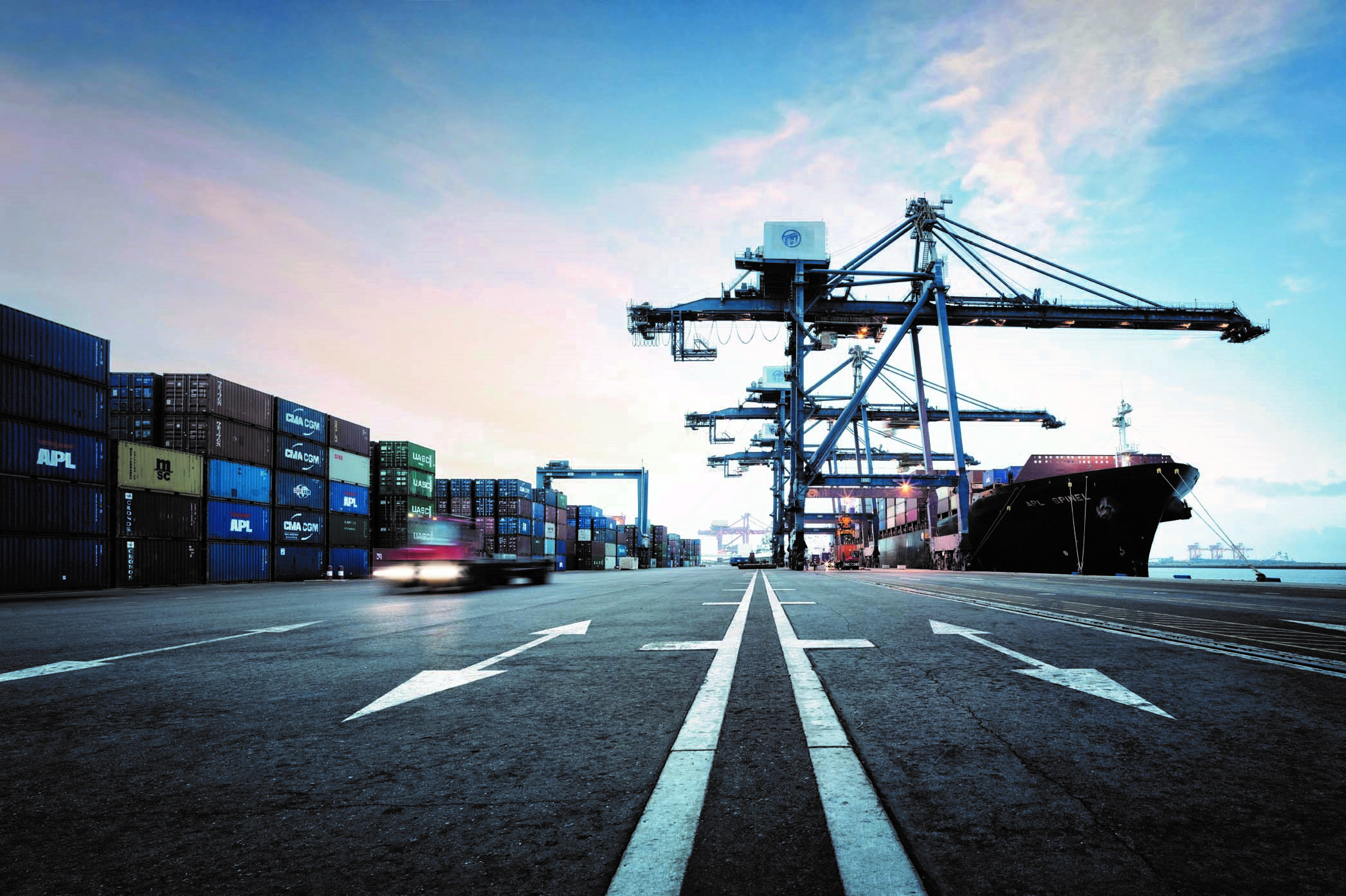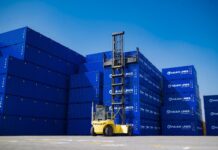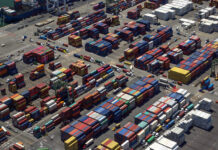
In this exclusive interview, Alexandros Itimoudis, Container News Analyst, speaks with Al Mukhtar Al Saifi, Energy Expert, and Haitham Al Tamimi, Business Development, Marine Services and Shipping Lead, at SOHAR Port and Freezone.

- Considering the fact that Oman has implemented the so-called “Omanization Strategy” for transport, logistics and technology sectors, what’s the role of port of Sohar in this initiative and how this could help the port navigate in a competitive global logistics industry?
At SOHAR Port and Freezone, our Omanization strategy is more than a compliance measure—it is a long-term commitment to empowering local talent and advancing national development goals. In alignment with Oman Vision 2040, we are focused on building a resilient, skilled Omani workforce across logistics, industrial operations, marine services, and digital transformation.
We work closely with educational institutions such as Sultan Qaboos University, Sohar University and National University of Science & Technology (International Maritime College Oman), alongside global training partners, to deliver structured programs that prepare Omanis for future-facing careers.

Within the Freezone, we implement a phased Omanization framework that begins at 15% and rises to 50% over two decades. These targets are tied to our investment incentive packages, ensuring that companies contribute meaningfully to national workforce participation while benefiting from licensing and tax advantages.
As one of Oman’s largest logistics and industrial hubs, SOHAR plays a vital role in developing national capabilities, supporting economic diversification, and positioning Omani talent for success in regional and global markets.
- Since the beginning of this year, port of Sohar has signed various agreements including LNG projects, solar cells and information systems for digital transformation. Which are the main goals behind such agreements, and do you think that Sohar has increased its competitiveness in global shipping operations through such initiatives?
At SOHAR Port and Freezone, we are accelerating our evolution into a globally competitive industrial and logistics hub through high-impact, future-focused strategic agreements. These partnerships are centered around clean energy, digital transformation, and sustainable manufacturing—sectors that are critical to long-term economic resilience.
A prime example is the Marsa LNG project, the first fully electrified LNG liquefaction and bunkering hub in the Middle East. With a capacity of one million tonnes per annum and powered by a 300 MW solar farm, it reinforces SOHAR’s role in advancing the global energy transition and positions Oman as a clean energy leader.
We also host the region’s largest solar-grade polysilicon manufacturing facility, contributing to global renewable energy supply chains and supporting Oman’s net-zero ambitions.
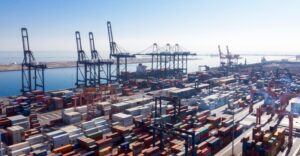
These investments not only align with Oman Vision 2040 but also strengthen SOHAR’s position as a hub for low-carbon, future-ready industries. In parallel, we are integrating AI-driven logistics platforms, real-time cargo tracking, and automated terminal operations to enhance port efficiency and global service standards.
Through this multi-pronged strategy, SOHAR is enhancing its value proposition to international investors, reinforcing its competitiveness, and positioning Oman as a rising force in sustainable global trade.
- Are there plans for port of Sohar to be part of the future IMEC project which aims to unify Middle East and Indian shipping sector into one great supply chain?
As a critical gateway along the India-Middle East-Europe Economic Corridor (IMEC), SOHAR Port and Freezone plays a critical role in advancing cleaner energy transitions, enabling infrastructure connectivity, and supporting efficient trade flows between Asia, the Middle East, and Europe.
A flagship project under this vision is Marsa LNG—a $1.6 billion joint venture between TotalEnergies and OQ. With a one-million-tonne-per-year capacity and powered entirely by a 300 MW solar farm, it will be one of the lowest-carbon LNG plants globally. The dedicated jetty, under construction by BESIX and expected to complete by early 2027, will directly support low-emission maritime trade through IMEC.
In parallel, SOHAR is deploying Marasi, a next-generation digital port management platform that enhances real-time coordination, transparency, and automation across marine operations—key pillars for integrated corridor-wide logistics performance.
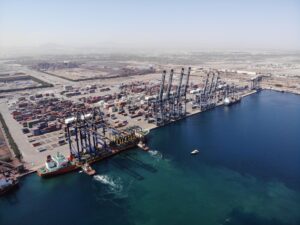
These initiatives align with IMEC’s overarching goals of sustainable development, trade resilience, and cross-border digitalization. They emphasize SOHAR’s role not just as a national asset, but as a strategic infrastructure partner supporting the corridor’s future-ready supply chain ecosystem.
- Since many regional ports have started to develop their operational profile, both in Gulf, India and Africa, do you think that Sohar port will face increasing competition in the near future? And if so, do you think that the strategic location of Oman would be an advantageous factor for the port?
In a region witnessing rapid port infrastructure expansion—from other Gulf ports to neighboring countries and East Africa—SOHAR Port and Freezone offers distinct competitive advantages that cater to the evolving needs of global trade.
Strategically located outside the Strait of Hormuz, SOHAR provides a secure and congestion-free alternative to traditional Gulf shipping routes. Our direct access to east–west trade lanes reduce transit risks and ensures consistent connectivity with Asia, Europe, and Africa.
What truly sets SOHAR apart is our seamless integration between port and Freezone operations, enabled by a dedicated corridor that ensures duty-free, fast-track movement of goods between terminals, warehouses, and production facilities. This ecosystem significantly reduces turnaround times, streamlines customs processes, and enhances supply chain speed—key priorities for modern logistics and manufacturing investors.
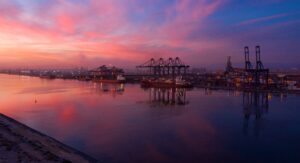
Complemented by 100% foreign ownership, long-term tax exemptions, and simplified licensing procedures, SOHAR combines world-class infrastructure with a business-friendly regulatory framework designed for scale and agility.
In an increasingly competitive region, SOHAR is more than a port—it is a strategic, efficient, and secure hub purpose-built to connect global markets through sustainable and integrated trade solutions.
- The volatile situation in Gulf region due to military developments and conflicts, has caused growing concern regarding shipping operations. Do you have any worries that this could affect operations in port of Sohar?
SOHAR Port and Freezone benefits from Oman’s longstanding reputation for political neutrality, institutional stability, and sound governance—factors that significantly enhance investor confidence and long-term business continuity.
These qualities offer a strategic edge for international trade. SOHAR provides reliable access to key markets, particularly during periods of geopolitical tension or supply chain disruption.
Operational resilience is embedded in our framework. We strictly adhere to international safety and security protocols and maintain comprehensive contingency planning in close coordination with national authorities and private-sector logistics operators. This ensures uninterrupted cargo flow, even amid global or regional challenges.
As global companies reassess supply chain risks, many are increasingly turning to Oman—and SOHAR in particular—for its stable, resilient, and well-governed trade environment. It’s a strategic choice for businesses seeking certainty in an unpredictable world.
- Is there any plans for expanding port’s facilities, regarding container terminals?
SOHAR Port is undergoing a comprehensive upgrade of its container handling infrastructure through(formerly known as OICT – Oman International Container Terminal). These investments are strategically designed to enhance capacity, efficiency, and future readiness.
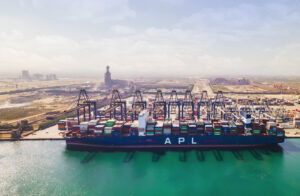
The development includes berth expansions, yard space enhancements, and the introduction of next-generation cranes and terminal equipment capable of accommodating larger vessels and increasing annual throughput capacity.
These enhancements will significantly reduce vessel turnaround times and strengthen SOHAR’s positioning as a regional transshipment hub, catering to growing demand across the Gulf, Indian subcontinent, and East Africa.
The upgrades are being rolled out in phases, with completion aligned to projected trade growth and integration with future multimodal corridors, including inland rail and road networks. This expansion directly supports Oman Vision 2040’s goal to elevate the country as a leading regional logistics center.
- What is the vision for the port for the next 5 years?
Over the next five years, our vision is to position SOHAR Port and Freezone as one of the region’s most integrated, intelligent, and sustainable trade hubs—a gateway that connects markets and industries with speed, reliability, and purpose.
This ambition is anchored in three strategic pillars:
- Geographic leverage: Reinforcing SOHAR’s status as a key access point to the Gulf and Indian Ocean, attracting high-value investments in energy, manufacturing, and re-exports.
- Digital transformation: Accelerating automation and data-driven operations across both port and Freezone to enhance transparency, efficiency, and customer experience.
- Sustainability leadership: Embedding ESG principles across all developments, supporting Oman’s carbon neutrality goals, and aligning with global environmental standards.
A central enabler of this vision is inland and cross-border connectivity—through rail, road, and future multimodal corridors—that will extend SOHAR’s reach deep into the region, enhancing trade fluidity and reducing transit times.
For investors and shipping lines, this means faster access to markets, more resilient infrastructure, and a future-proof platform for growth. As global trade dynamics evolve, SOHAR will stand out not only as a port, but as a competitive force in the region, shaping the next chapter of industrial and logistics excellence in Oman and beyond.
